Content is the driving force of modern marketing, underpinning channels like SEO, PPC, and many others. In a digital space overflowing with content, the challenge for marketers is clear: standing out in a crowded field.
So, how do you engage the right audience?
The key is relevance. Content that speaks directly to your target audience's needs, pain points, and challenges is what truly engages them with your brand.
Key Takeaways
- Use reliable data sources, not intuition, to identify content topics with proven user demand.
- Map every content idea to clear search intent to ensure relevance and ranking strength.
- Combine insights to create content ideas that outperform single-signal keyword research.
In this post, I'll address the following based on my experiences working with writers and SEO content strategists:
- What Makes a Good SEO Content Idea?
- How to Find New Content Ideas: 6 Amazing Sources
- How to Turn Data Into SEO Content Ideas
Instead of identifying what might engage the audience, this blog shows you how to rely on data to come up with content ideas to improve visibility with your target audience.
Recommended Reading: 8 Tricks to Creating Engaging Content
What Makes a Good SEO Content Idea?
Three key factors make a content idea capable of truly engaging your audience, ranking high in search results, and improving your organic traffic.
1. Identify High-Demand Topics Through Keyword Research
In other words, a lot of people must be searching for it to justify investing time and effort into it. This is where a keyword research tool or SEO platform comes into the picture.
You need to find topics that clearly refer to a problem of a wide audience. This will help to deliver a greater ROI.
2. Answer the Questions Your Audience Is Asking
To genuinely engage your audience, your content must speak directly to their pain points and the questions that brought them to search in the first place.
This requires you to optimize for search intent so the information you provide matches what users expect to find.
When you align content with search intent, you ensure that every piece not only answers their specific questions but also delivers the exact type of solution or guidance they’re looking for.
3. Content Must Match Relevant Search Intent
Most queries fall into four modern intent categories: informational, transactional/commercial, navigational, and local.
And so, to engage, content must align with search intent.
 (This specific query has an informational intent.)
(This specific query has an informational intent.)
Matching intent to keywords is crucial, and today’s SEO platforms classify intent using these four standard categories.
For example, the phrase “content calendar” has an informational intent. Queries including phrases like “near me” or “where is” suggest a local intent. And words like “buy” or “purchase” signify the transactional nature of a keyword.
Your target keyword for the content should inform how you’ll structure the piece and what information you’ll include to make it relevant.
The common link between all three factors is that they relate to your audience’s current situation:
- Demand signifies the severity of a problem,
- Questions reveal their challenges but also, objectives, and
- Intent reveals what your audience would use this information for.
Here’s how to discover the data to reveal all three factors.
How to Find New Content Ideas: 6 Amazing Sources
One of the many advantages of writing SEO content is the abundance of data to inform a content marketing strategy.
A lot of it comes from Google directly. Other insights live across other third-party data providers.
So, here are six of the best sources I use to generate engaging and relevant content ideas regularly:
1. Google Search Console
Google Search Console is now the primary source for understanding which queries bring users to your site.
For example, the Search Analytics report includes data about top keywords attracting visitors, along with other information about the site’s visibility.
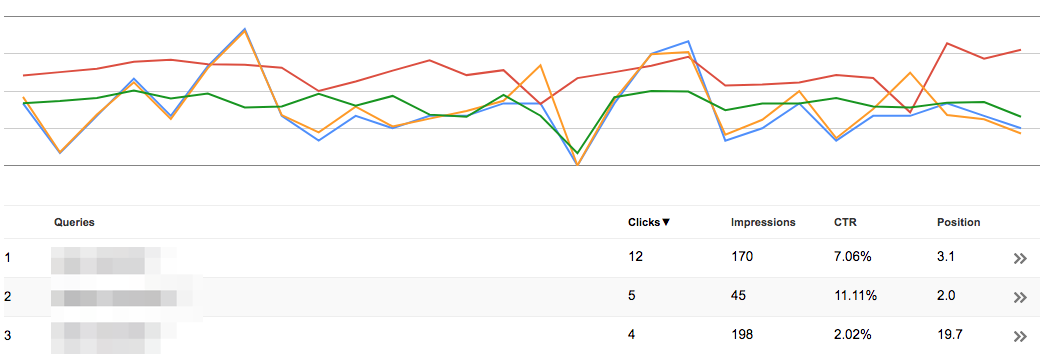
For the most part, we use these insights to identify new keyword opportunities.
However, it can also reveal your audience’s topic preferences. Here’s how.
-
- Sort the results by click-through rate (CTR)
- Look for higher-than-average CTR, compared to other keywords with similar intent. Note, that this doesn’t necessarily have to be keywords with the highest CTR. We’re looking for above the average.
- Analyze the intent behind those keywords, as well as top landing pages to identify an opportunity for creating more content.
Why focus on CTR? As Derek Edmond points out on Search Engine Land:
A higher-than-average click-through rate suggests that content associated with our website is relevant and that searchers will dig deeper to find good results.
2. Keyword Planner
I'll admit that identifying keyword intent can be tricky. A phrase that appears informational, might actually relate to a transactional intent or vice versa.
Take the term “Florida rentals.” I have a feeling that the term is related to an intent to rent a place for holidays and we can use data to confirm this hypothesis.

("Florida rentals" has a transactional intent.)
One way to avoid targeting the wrong intent is by looking at long-tail keywords. These additional descriptors reveal why a person would look for certain information specifically.
And to reveal those, you can use the Google Ads Keyword Planner – an SEO tool many digital marketers use to identify the best phrases to bid on.
3. Google Ads Cost Per Click Data
Another strategy to assess how important a particular idea is to your audience is by looking at how much other brands are willing to bid on it.
But the Google Ads’ CPC data – the average of bids for a list of target keywords – helps gain insight not only into your audience’s preferences. With it, you can tap into your competitors’ experience and insights too.
Google Ads CPC reflects not only demand, but also the commercial value and competitiveness of a keyword. High CPC indicates that advertisers see strong user intent and meaningful value behind the query.
While CPC doesn’t measure raw search demand, it’s a reliable indicator of the keyword’s commercial value and strong audience intent.
4. Social Media
Social media platforms like TikTok Search, YouTube, and LinkedIn reveal what topics your audience actively discusses, searches for, and shares.
And there are many different ways you can assess social media content.
#1. Analyzing content sharing trends
Inspecting which existing content assets attract the most shares could spark ideas about what topics engage your audience.
#2. Researching the most shared content
Similarly, looking at other content (not just your own) that your audience shares the most might reveal their common problems or interests.
#3. Asking the audience for help
Finally, you could test different topics by inviting your social media audience to help. Consider asking them a direct, open-ended question or sharing a poll.
5. Online Forums or Q&A Sites
Websites like Quora or Reddit give you direct access to your audience’s real questions and challenges, expressed in their own words.
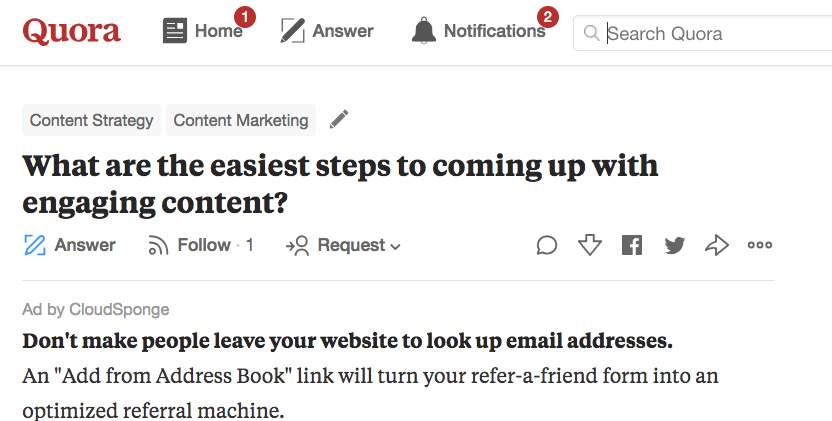
Also, the upvote systems on these sites allow you to identify advice that has engaged the audience the quickest.
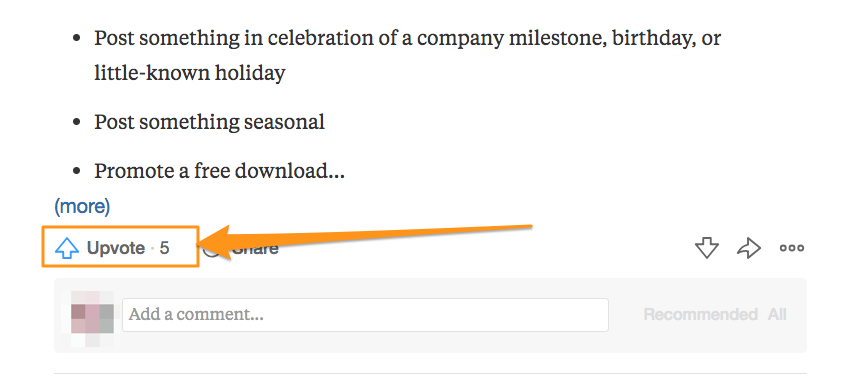
The challenge, however, is that researching such information manually requires incredible amounts of time and other resources.
The solution – use dedicated content marketing and ideation tools like Content Ideas that collect relevant data and present it in context.
6. Content Ideas
Content Ideas crawls more than 1 billion pages every day, applying AI to reveal real user questions, high-value keywords, popular long-tail keywords, and trending topics.
As a content writer, you can leverage the tool to find out:
-
- Content demand by assessing search volume behind new ideas
- The inspiration for new content ideas directly from real user questions,
- Additional long-tail keywords to define the intent,
- Google trends to determine the demand further, and
- Additional information to boost your authority on the topic.
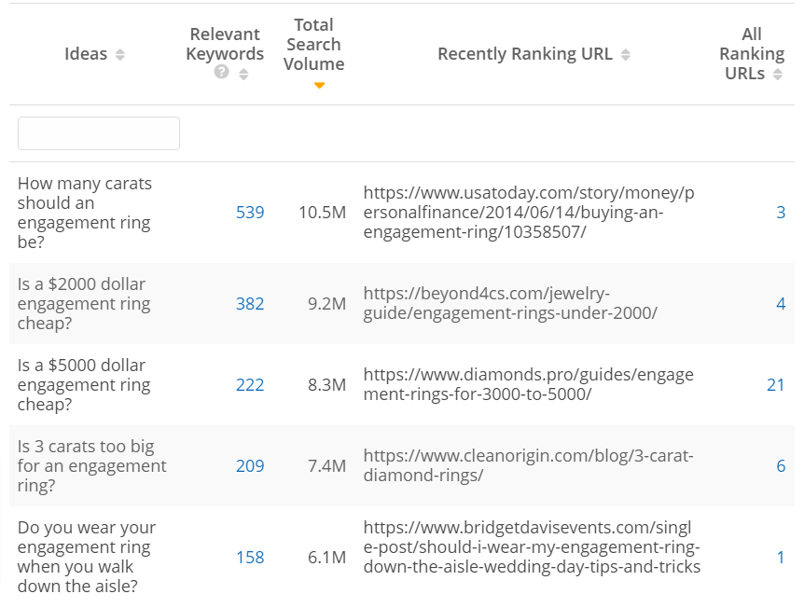 (Image of the Content Ideas feature in a search for "engagement rings".)
(Image of the Content Ideas feature in a search for "engagement rings".)
How to Turn Data Into SEO Content Ideas
Everything we discussed above generates nothing but data and insights - not the actual topics themselves.
So, here’s how to turn all that data into relevant SEO content ideas.
#1. Brainstorm content ideas based on the research findings above.
Let’s pretend that you created a list of relevant keywords from the Google Search Console. You also identified the most engaging terms among them by looking at the CPC data.
To turn that research into actual topics, consider how your product, services, or expertise help solve any challenge a person searching for that keyword might have. This way, you’ll identify the most relevant topics to what you ultimately want to offer the reader.
#2. Prioritize those ideas by assessing their seasonal demand.
As I wrote in an earlier piece - to win a customer, you must give them what they need at the exact time they need it. In other words, you must prioritize your ideas based on seasonality and customer demand.
#3. Map your ideas to the four search intents.
We’ve talked about the importance of intents already. You know that targeting a specific reason for using a keyword assures that your content delivers the most relevant information.
To do this, you must identify the specific intent behind a keyword.
Now, our Content Ideas tool reports on that directly. But if you’re using different solutions, you might have to analyze the SERP manually to determine:
- The type of information to include,
- The most relevant type of content – blog post, video, landing page, etc.
- What approach to take when creating it.
All this combined will help you better address your customers’ challenges.
How Will This Process Help You Create Better SEO Content?
I admit that what I outlined is an elaborate process. Naturally, you might be wondering why you need to go through all those steps.
Here are some of the many benefits of using audience insights to identify content ideas:
- You get to discover high-value, relevant keyword opportunities.
- You learn how your audience describes their problems, and how to communicate with them using their language,
- You identify trending topics and can bank on the highest audience interest,
- You publish more relevant content than your competitors, and
- You improve your content’s reach.
Now that you know the process, it's time to go out and create content that is relevant and optimized for your audience to enjoy!
<<Editor's Note: this piece was originally published in July 2018 and has since been updated.>>





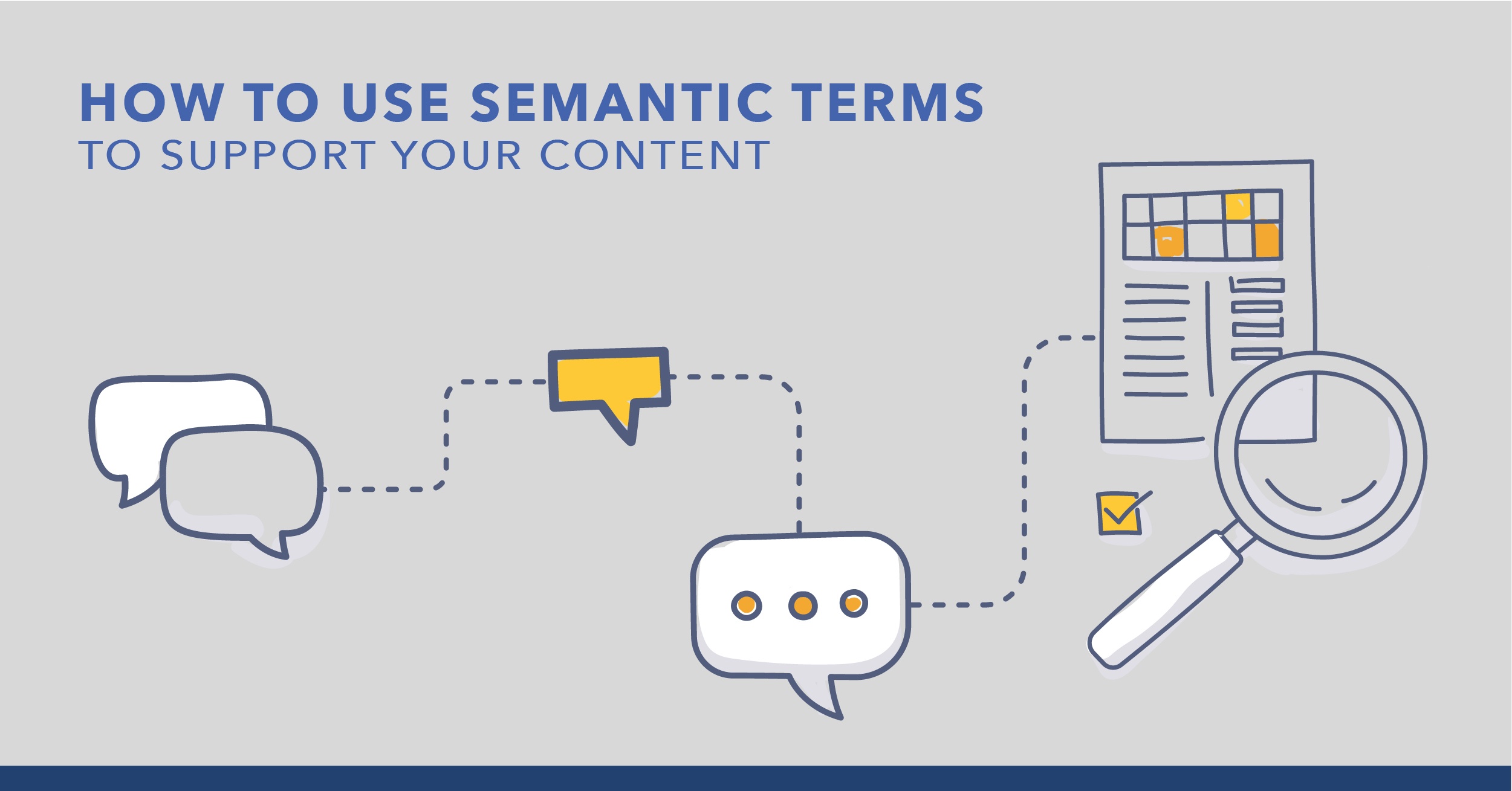

Comments
Currently, there are no comments. Be the first to post one!